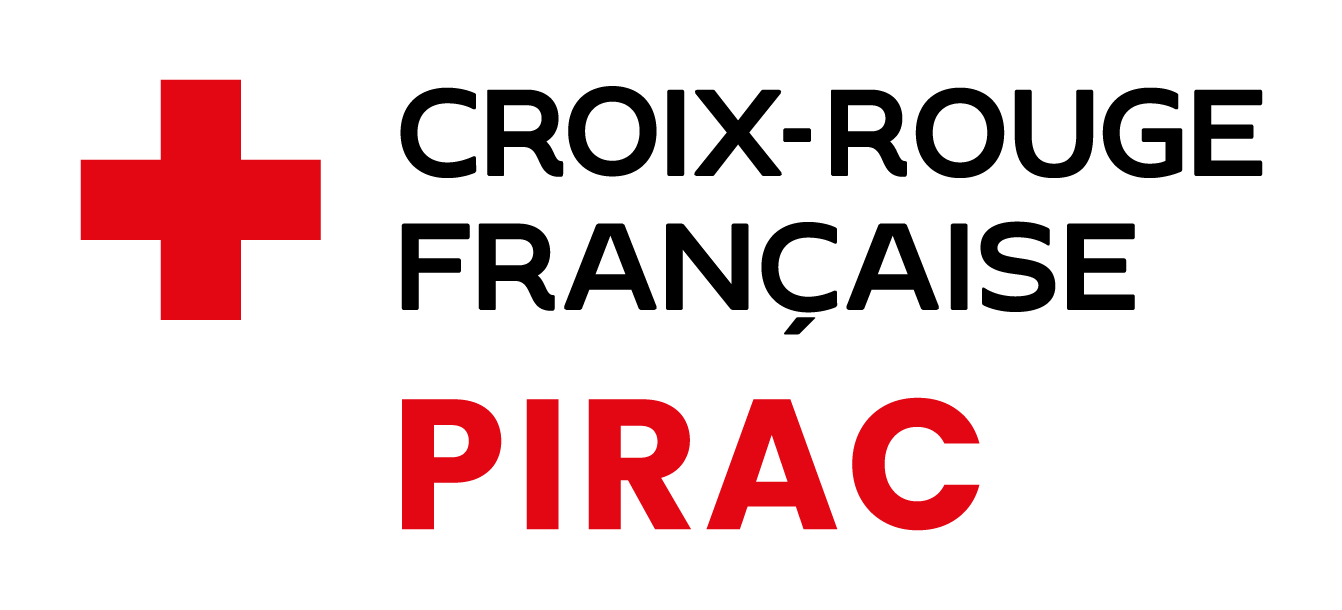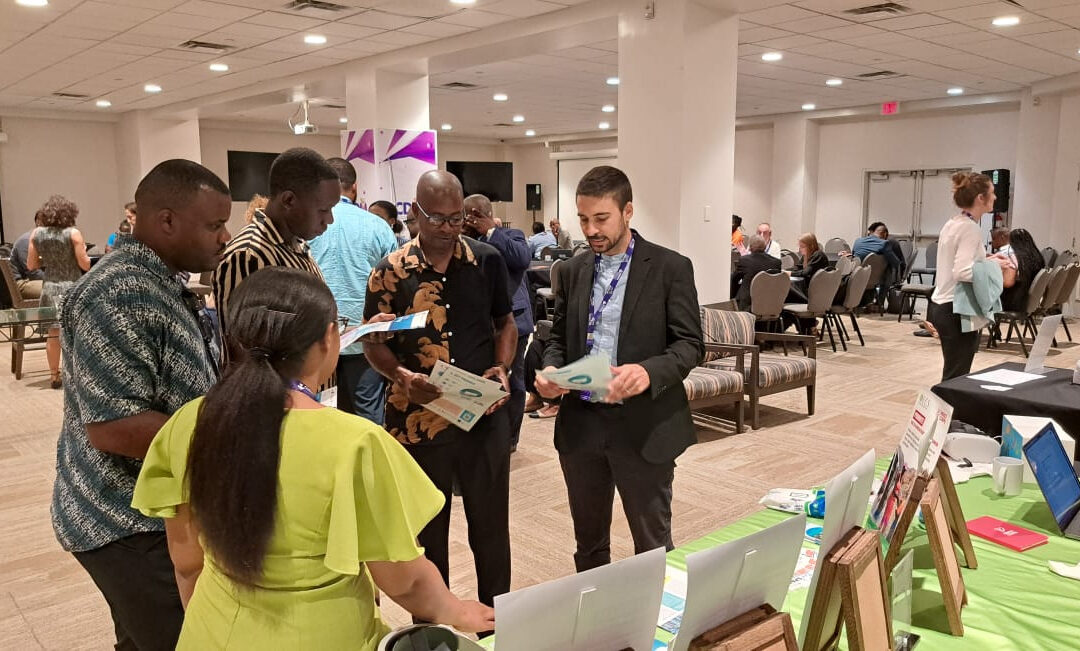The 13th Caribbean Conference on Comprehensive Disaster Management (CDM13), organized by CDEMA, was held from December 6 to 12 in Saint Kitts and Nevis under the theme “Road to Resilience – Checkpoint 2024: Upgrading for a Dynamic Future“. This biennial event, a must for regional and international players, brought together more than 500 political decision-makers, experts and organizations to discuss issues relating to climate change, disaster management and the sustainability of Caribbean territories. Among the key contributions, PIRAC previewed the results of its two practical environmental studies conducted with CDEMA and other partners.
CDM13: a key event for better risk management in the Caribbean
With the number of climatic disasters on the rise, the Caribbean is one of the regions most exposed to natural hazards. Hurricanes, earthquakes, tsunamis and floods regularly threaten island populations and territories. These risks are compounded by marked socio-economic vulnerability, increasing urbanization and the effects of climate change, which amplify the frequency and intensity of extreme phenomena. The exceptionally active 2024 hurricane season bears witness to this, with the early and powerful arrival of Hurricane Beryl in early July.
Beyond their immediate impact, disasters have a lasting effect on already fragile island economies, while exerting increased pressure on local ecosystems. These challenges call for concerted and appropriate responses, mobilizing populations, institutions and international organizations alike.
This is the background to the 13th Caribbean Conference on Comprehensive Disaster Management (CDM13), organized by CDEMA. Its role is to strengthen regional coordination and promote innovative approaches to building sustainable resilience. Held every two years, this 5-day conference offers a varied program of presentations, roundtables, workshops and opportunities to strengthen collaborations, designed to respond to evolving challenges and opportunities in the field of disaster risk reduction and management.
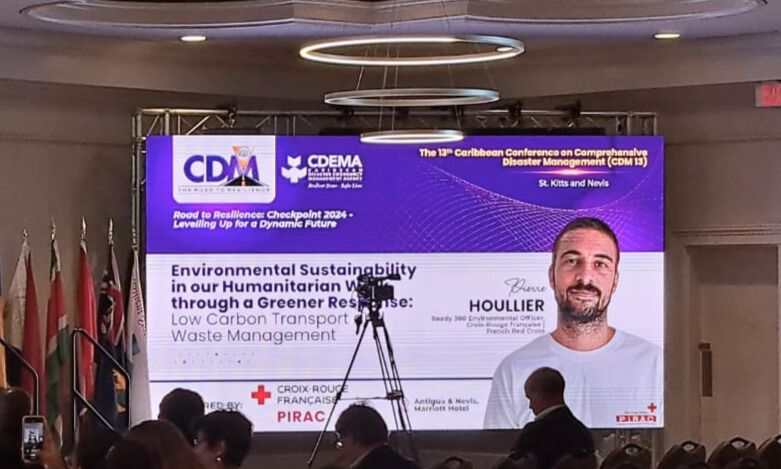
Echoing the themes discussed at CDM13, and building on its close and long-standing collaboration with CDEMA, PIRAC had the opportunity to preview the results of two environmental studies carried out jointly. These studies converge around a common theme: how can we, as humanitarian emergency workers, reduce the environmental impact of our operations?
Acting faster and stronger: recommendations for limiting the ecological footprint of humanitarian emergency operations
Two environmental studies, one common ambition
As part of the READY 360°/3 Oceans program, supported by the European Regional Development Fund (Interreg Caribbean 2021-2027), Agence Française de Développement (AFD) and the CMA CGM Foundation, PIRAC is committed to building comprehensive and more sustainable resilience in Caribbean territories. The program, scheduled to run from 2024 to 2026, aims to strengthen disaster preparedness and response capacities at all levels: from individuals and families, to organizations and businesses, right through to regional coordination institutions.
As part of this dynamic, two essential studies were carried out in 2024, fully in line with the program’s objectives:
![]() A study on the management and treatment of waste generated by emergency operations in the America-Caribbean zone ;
A study on the management and treatment of waste generated by emergency operations in the America-Caribbean zone ;
![]() A study on the decarbonization of humanitarian response operations in the Americas and the Caribbean.
A study on the decarbonization of humanitarian response operations in the Americas and the Caribbean.
To ensure the relevance and applicability of these studies, two steering committees were set up for each one, bringing together technical and financial partners. Complementary in their approach, the two studies have the same objective: to provide concrete, operational solutions for those involved in humanitarian emergencies to reduce their environmental footprint.
Better management for less impact: waste management study
Key results:
- Waste estimation tool: implementation of a tool based on IFRC family kits to estimate the amount of waste generated by a humanitarian operation;
- Waste generated by PIRAC (2010-2024) :
37 emergency operations carried out, potentially generating 11 tonnes of waste, equivalent to 2.2 20-foot containers: 700 kg of paper and cardboard, 1.6 tonnes of plastic and 8.8 tonnes of pallets.
Operational recommendations:
- Anticipating waste management costs: > Example: during the Haiti emergency in 2021, the simulated cost of waste management is 6,500 euros, representing about 2.5% of the total cost of the operation; > Integrate these costs right from the planning stage to avoid unforeseen financial impacts.
- Reduce the use of plastic film
> offer alternatives such as reusable pallet covers to replace the plastic films used in shipping; - Plan the logistics for returning covers after use, either after distribution or during a restocking operation.
- Adopt a circular economy model:
> Replace the traditional linear model (extraction → production → use → waste) with a circular economy in which resources are reused.
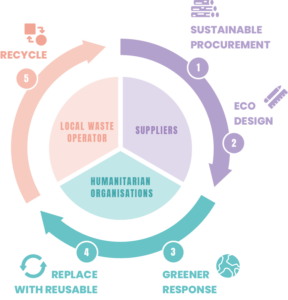
- Encourage practices such as :
> Reducing single-use packaging ;
> The elimination of plastic bags and disposable packaging
Despite the advances and recommendations proposed, several obstacles and limitations have been identified, such as : - Lack of local resources and partnerships: collaboration with local operators specialized in recycling remains insufficient, which hinders the implementation of recommended practices;
- Lack of appropriate infrastructure: In some areas, waste has to be exported or, in the worst case, buried due to the lack of recycling facilities for plastic and paper, limiting sustainable treatment options.
Limiting your energy footprint: study on decarbonization
Key results :
- Reducing air transport emissions: the study shows that air transport generates considerable greenhouse gas emissions;
- The case of the earthquake in Haiti (2021): 10 tonnes of equipment for 2,000 families were transported by air, an option with low environmental profitability;
- Opportunity transport and pooling of resources: make maximum use of existing means of transport (e.g. PIRAC in cooperation with the French Armed Forces) to avoid additional journeys.
Some operational recommendations:
- Minimizing the use of air transport : limit the use of air transport as much as possible, and favor other solutions such as sea or land transport whenever possible
- Promote opportunity transport: collaborate with partners to avoid the need for new transport and optimize available resources;
- Optimize container filling: aim for a target of 10 tonnes per TEU (twenty-foot equivalent unit) to maximize the efficiency of transport operations;
- Sailing transport : consider environmentally-friendly alternatives, such as sailing certain shipping routes, to reduce greenhouse gas emissions
.
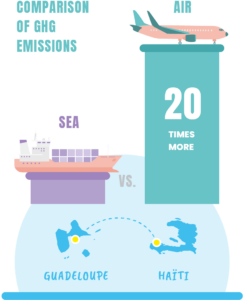
Several obstacles and considerations must be taken into account to make decarbonization solutions applicable and effective in emergency situations, such as:
- The methodology to be defined: implementing a consistent approach to assessing and reducing emissions, is complex and requires harmonization of practices worldwide;
- The difficulty of implementing low-carbon solutions: low-carbon solutions, while effective in the long term, are often difficult to implement urgently due to logistical and time constraints in crisis situations;
- Carrier limitations: often following established routes, making it difficult to adopt new practices, even if they are more environmentally friendly.
Towards responsible humanitarian action: ways forward
Beyond the results of the studies on waste management and decarbonization, PIRAC is committed to implementing concrete actions in the short, medium and long term to strengthen the sustainability of its humanitarian interventions in the region. Here are some of the priority actions:
> Debuting sail transport: in 2025, PIRAC will attempt to use sail transport for future emergency operations in the Caribbean islands. The aim of this initiative is to test this low-carbon solution in the field.
> Strengthen collaboration with CDEMA: PIRAC will continue to work with CDEMA to develop appropriate waste management tools, particularly with a view to the 2025 hurricane season.
> Integrate waste management into post-disaster assessments: integrating a waste management component into field assessments will enable this aspect to be better taken into account in the humanitarian response, particularly in the context of capacity building for national societies.
PIRAC will continue its efforts to strengthen regional resilience by forging partnerships with local and regional players in the Caribbean. At the same time, it will continue to promote its actions and expertise among GRC players, supporting a collective and sustainable approach to crises. Steps that will contribute to a future in which humanitarian interventions are not only more effective, but also more respectful of the environment.
Illustrations: © Faustine Najman
